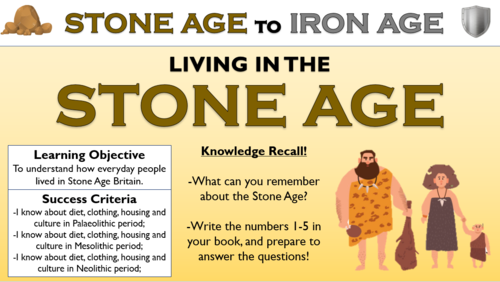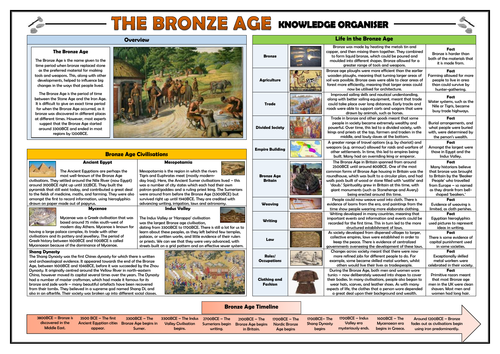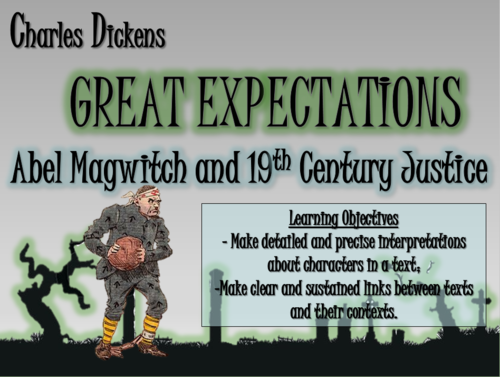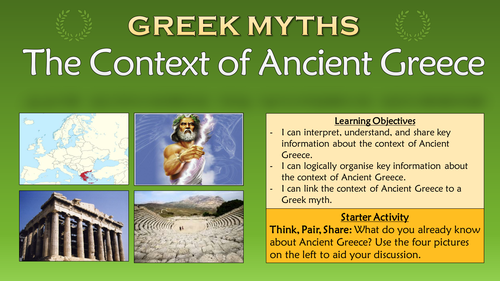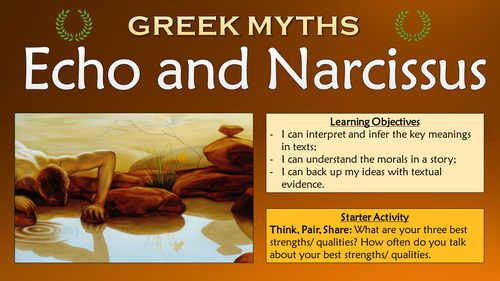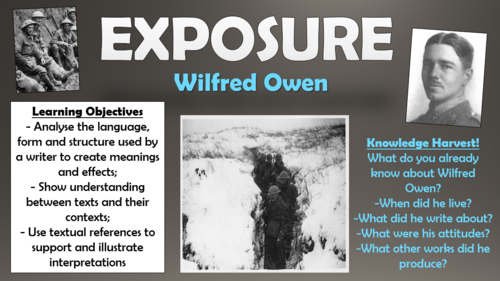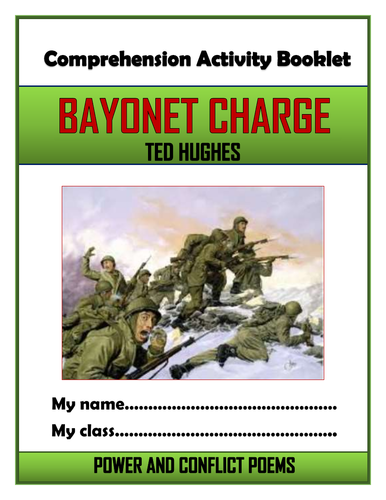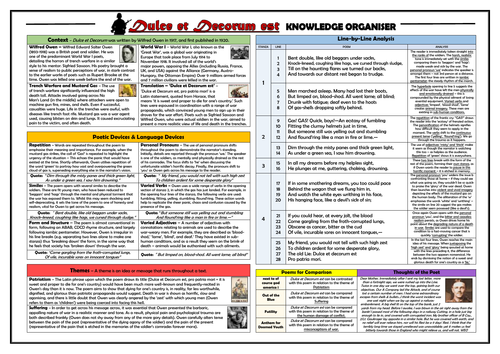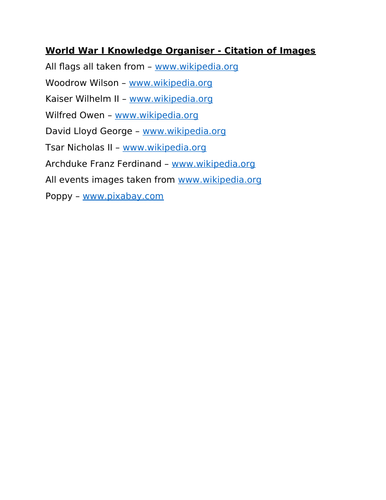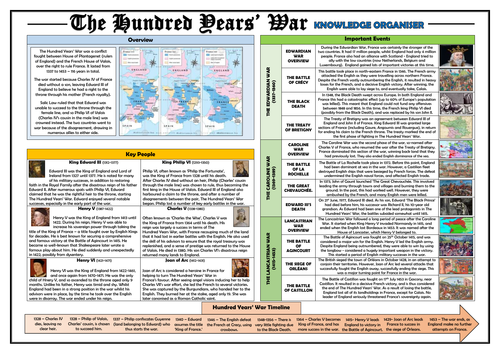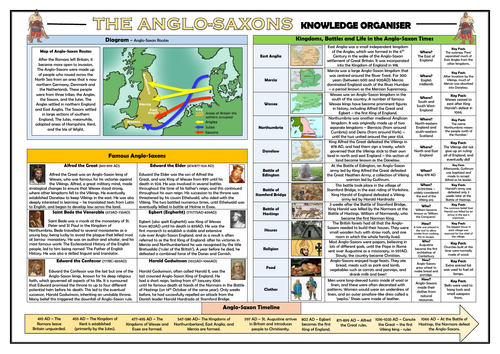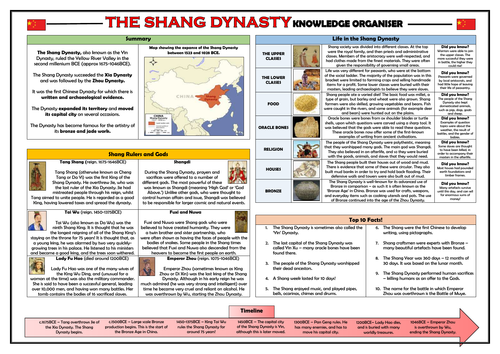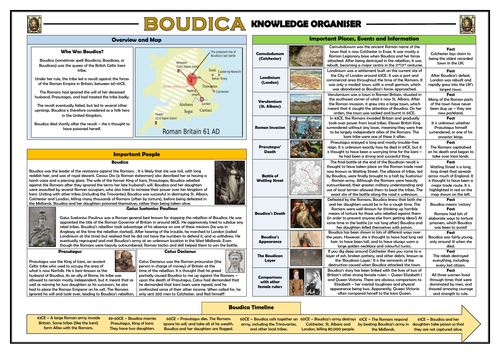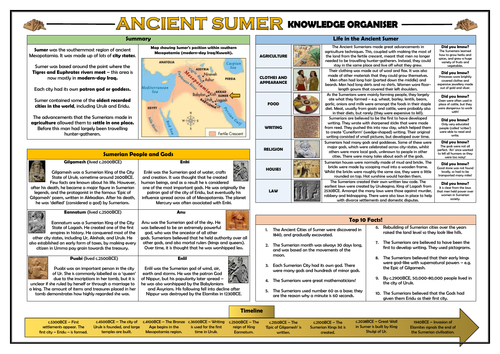
3k+Uploads
1896k+Views
2230k+Downloads
History

Stone Age to Iron Age - Living in the Stone Age!
In this engaging lesson, children learn about the daily life of people in the Stone Age, through learning about:
-their diet/ how they found food;
-their clothing and how it was made;
-their housing;
-their culture and things that they made;
…across the Palaeolithic, Mesolithic, and Neolithic periods.
The learning is guided by a clear and colourful PowerPoint presentation, which guides students through the following step-by-step journey:
-Knowledge recall - gauging what children know/ can remember about the Stone Age, including the three main periods;
-Looking at a range of sources to establish what daily life was like in the Palaeolithic period;
-Reading a report to discover what life was like in the Mesolithic period;
-Watching an engaging video to find out what life was like in the Neolithic period;
-Completing a diary entry based on a day in the life of one of the periods that they have learnt about;
-Self-reflecting on the extent to which they feel they have met the learning objective.
Included is the comprehensive PowerPoint presentation (around 20 slides), the hyperlink for the video, the worksheet, and the paper sources (in both Word and PDF)
In the past, I have used this lesson with children in lower KS2 (years 3 and 4) - the key learning is aligned with curriculum expectations for history. All images are licensed for commercial use.

The Bronze Age Knowledge Organiser/ Revision Mat!
This clear, detailed and visually-appealing resource offers a complete reference point for students learning or revising knowledge relating to The Bronze Age. It contains comprehensive sections on:
Bronze Age Overview (with image of Bronze Age scene);
Bronze Age Civilisations;
Bronze Age Timeline;
Life in Bronze Age, comprised of information sections on: Making Bronze, Agriculture, Trade, Empires, Divided Society, Weaving, Writing, Bronze Age Britain, Law, Roles/Occupations, Clothing and Fashion .
The resource is designed to be printed onto A3, and is provided as both a PDF and a Word version (so that you can edit if you want to). All images used are licensed for commercial use and are cited on a separate document (included). The resource is most suitable for children in KS2 or KS3.

Stone Age to Iron Age - Introduction to the Stone Age!
In this engaging lesson, children are provided with an introductory understanding of the Stone Age, through learning:
-what the ‘Stone Age’ means and when it was;
-the 3 different periods of the Stone Age;
-how people spread across the world in the Stone Age
The learning is guided by a clear and colourful PowerPoint presentation, which guides students through the following step-by-step journey:
-Knowledge harvesting - gauging what children already know about the Stone Age, and gathering what else they would like to know;
-Answering recall questions based upon the areas of history that they have learnt previously that are pertinent to this topic;
-Defining the key terms ‘Stone Age’ and ‘prehistoric’;
-Learning about the 3 periods of the Stone Age: (palaeolithic, mesolithic, neolithic) and placing these on a timeline;
-Learning about how humans spread across the world, from their origins in Africa;
-Completing plenary activities to demonstrate their understanding of each of the concepts learnt in the lesson;
-Self-reflecting on the extent to which they feel they have met the learning objective.
Included is the comprehensive PowerPoint presentation (over 20 slides) and the timeline template (in both Word and PDF)
In the past, I have used this lesson with children in lower KS2 (years 3 and 4) - the key learning is aligned with curriculum expectations for history. All images are licensed for commercial use.

Great Expectations: Abel Magwitch and 19th Century Justice!
This engaging and informative lesson enables students to make detailed and precise interpretations of the character of Abel Magwitch in Great Expectations, through developing a deep understanding of the key features of the 19th Century criminal justice system. In particular, students learn about how criminals were perceived and treated in Victorian society, and link this knowledge to Abel Magwitch’s introduction, development, and demise in the novel.
The lesson follows a step-by-step learning journey, in which children learn through:
- Understanding key contextual information about the 19th Century criminal justice system;
- Reading extracts about Abel Magwitch in 'Great Expectations' and identifying the features of the 19th Century justice system within the text;
- Analysing how Dickens presents his views about the treatment of criminals through the character of Abel Magwitch in the text;
- Peer assessing each other's learning attempts.
Included is:
- Whole lesson PowerPoint - colourful and comprehensive;
- Extracts about Abel Magwitch;
- Analysis template with success criteria for creating well-structured responses;
- Comprehensive lesson plan.
All documents are attached as Word and PDF in case formatting differs on your computer.
There are also opportunities for group learning, peer assessment, and whole class discussion. This was originally taught to mixed ability year 10 groups, but can easily be differentiated for groups of different ages and abilities.
All images are licensed for commercial use, and image rights are listed on the last page of the presentation.

Frankenstein: The Context of Frankenstein
This engaging and detailed lesson aims to improve students’ understanding of the social and historical context of Mary Shelley’s gothic horror novel: Frankenstein. The lesson places a particular focus upon the developments in health, science, and technology at the time the text was written and set, the locations visited by the author, and the life of Mary Shelley. By the end of the lesson, students demonstrate their ability to link their understanding of context to specific sections of the text.
The lesson follows a step-by-step learning journey, in which children learn through:
- Considering how life has changed between the end of the 18th Century and the present day;
- Researching key information about health, scientific understanding, and major events in the late 1700s;
- Understanding the features of locations in the novel, and interpreting what they may symbolise;
- Developing their understanding of the author: Mary Shelley, and considering the key events in her life that influenced her writing of Frankenstein;
- Linking knowledge of time, place, and author, and relating these to specific areas of the text;
- Peer assessing each other's learning attempts.
Included is:
- Whole lesson PowerPoint - colourful and substantial; (including an animated Frankenstein's monster to guide them through the lesson, and links to helpful websites);
- Comparison between 1700s and the present day worksheet (and a teacher answer sheet);
- Card sorting activity based on locations in the novel;
- Mary Shelley worksheet (and a teacher answer sheet);
- Analysis template with success criteria for creating well-structured responses;
- Comprehensive lesson plan.
There are also opportunities for group learning, peer assessment, and whole class discussion. This was originally taught to middle-ability year 9/10 groups, but can easily be differentiated for groups of different ages and abilities.
All images are licensed for commercial use, and image rights are listed on the last page of the presentation. NOTE: One of the tasks requires access to researching materials, e.g. internet or library access.

Greek Myths: The Context of Ancient Greece
This interesting and highly-stimulating lesson enables students to gain a clear understanding of key information regarding the historical and cultural context of Ancient Greece. They also learn to logically organise the key information that they gather, and make clear links between Greek myths and their newly-gained understanding of context. This lesson enables them to construct a solid foundation of contextual understanding for future deeper learning of Greek myths.
The lesson follows a clear, logical, bite-size learning journey, which guides students towards differentiated learning objectives. Over the course of this journey, they become able to:
- Read and interpret key information regarding Ancient Greek gods, geography, culture, and landmarks;
- Share their understanding through engagement in a jigsaw model task;
-Order key events in Ancient Greek History through the creation of a dated timeline;
- Link their understanding of historical and cultural context to an independently-researched Greek Myth;
-Peer assess each other's learning attempts.
This resource pack includes:
- A visually engaging whole-lesson PowerPoint presentation;
- Key information sheets on Ancient Greek gods, geography, culture, and landmarks;
- Ancient Greece Timeline Events Cards (and answer sheet for teachers);
- A detailed lesson plan, complete with what the teacher and students should aim to achieve at each stage of the lesson.
All images are licensed for commercial use, and are cited on the final slide of the PowerPoint. Note: The final two tasks work best with access to ICT/internet resources.

Greek Myths: Echo and Narcissus
This interesting and highly-stimulating lesson enables students to gain a clear understanding of the key meanings in the Greek Myth ‘Echo and Narcissus.’ Through engagement with the story, students learn to interpret and infer the key meanings in the text, understand its predominant morals, and back up their ideas with textual evidence.
The lesson follows a clear, logical, bite-size learning journey, which guides students towards differentiated learning objectives. Over the course of this journey, they become able to:
- Define the key term 'moral' and identify the morals in popular tales;
- Read the story 'Echo and Narcissus' and interpret the key meanings;
- Identify, explain, and analyse the moral of the story in 'Echo and Narcissus';
- Engage deeply with the text by inferring the thoughts and feelings of the key characters;
- Test their understanding of the story by answering an exam-style comprehension question.
-Peer assess each other's learning attempts.
This resource pack includes:
- A visually engaging whole-lesson PowerPoint presentation;
- Paper copies and online links to the text;
- Resources for 'In Your Shoes' Task;
- Bloom's Taxonomy worksheet;
- A logically scaffolded essay template;
- A detailed lesson plan, complete with what the teacher and students should aim to achieve at each stage of the lesson.
All images are licensed for commercial use, and are cited on the final slide of the PowerPoint.

Greek Myths: Theseus and The Minotaur
This engaging and detailed lesson enables students to gain a deep understanding of the Greek Myth 'Theseus and The Minotaur.' In doing so, students learn to interpret and infer the key meanings in a myth, analyse the descriptive language in a myth, and use descriptive language to describe their own ancient Greek monster.
The lesson follows a clear, logical, bite-size learning journey, which guides students towards differentiated learning objectives. Over the course of this journey, they become able to:
- Define the key terms 'adjective' and 'synonym' and use these appropriately and imaginatively to describe an image of the Minotaur;
- Read the story 'Theseus and The Minotaur' and interpret the key meanings;
- Identify, understand, and analyse the descriptive language in 'Theseus and The Minotaur;'
- Apply their understanding of descriptive techniques by creating and describing their own mythical beast, using a model example, a success criteria, and a scaffold;
- Peer assess each other's descriptive attempts.
This resource pack includes:
- A visually engaging whole-lesson PowerPoint presentation;
- Paper copies and online links to the extract needed for the lesson;
- Understanding Descriptive Language worksheet;
- Creating a Beast Template, and model example;
- A detailed lesson plan, complete with what the teacher and students should aim to achieve at each stage of the lesson.
All images are licensed for commercial use, and are cited on the final slide of the PowerPoint.

Exposure - Wilfred Owen
This engaging, comprehensive lesson aims to improve students’ understanding of Wilfred Owen’s WWI power and conflict poem ‘Exposure’ with particular focus upon the language, structure, and subject matter used within the poem. By the end of the lesson, students demonstrate their knowledge of the text analytically, through assured, appropriate, and sustained interpretations.
The lesson follows a step-by-step learning journey, in which children learn through:
Considering the meanings of the word ‘exposure’ and inferring what this may suggest about the meaning of the poem;
Securing contextual understanding of the conditions and weather faced by WWI soldiers;
Reading and interpreting the poem, using a provided line-by-line analysis, and interactive group activities;
Developing their understanding through inferring and analysing key language and structural choices;
Analysing how the themes of suffering and misery are conveyed through Owen’s language and structure choices;
Self/ Peer assessing each other’s learning attempts.
Included is:
Whole lesson PowerPoint - colourful and substantial; (including hyperlinks to informative and videos)
Copy of poem (freely available online);
Deeper thinking worksheet;
Analysis template with success criteria for creating well-structured responses;
Comprehensive lesson plan.
All resources are provided as word documents (for easy editing) and PDF documents (to ensure consistency of formatting between computers).
There are also opportunities for group learning, peer assessment, and whole class discussion. This was originally taught to middle-ability year 10 and 11 groups, but can easily be differentiated for groups of different ages and abilities.
All images are licensed for commercial use, and image rights are listed on the last page of the presentation.

Bayonet Charge Comprehension Activities Booklet!
This 16-page resource booklet contains a wide range of challenging and engaging comprehension activities for use throughout the reading of Ted Hughes’ power and conflict poem 'Bayonet Charge.’ Teachers have found the activities particularly useful throughout teaching, or for exam revision or guided reading sessions. They are perfect for aiding the progress of students towards meeting the key English Literature assessment objectives - suitable for all examining bodies. Students have found these resources extremely engaging, and it is clearly highlighted within each task regarding which assessment strands the task is designed to demonstrate.
It is provided in both Word (to allow for easy editing) and PDF (to ensure for consistency of formatting between computers).
Activities within the booklet include (amongst many others):
‘Analysing Context’ - helping students to ‘Show understanding of the relationships between texts and the contexts in which they were written.’
‘Analysing Subject Matter, Language and Structure’ - to help students to ‘Analyse the language, form and structure used by a writer to create meanings and effects, using relevant subject terminology where appropriate.’
‘Diary Entry’ - to help students to ‘Use a range of vocabulary and sentence structures for clarity, purpose and effect, with accurate spelling and punctuation. Make an informed personal response, recognising that other responses to a text are possible and evaluating these.’
‘The Speaker’ - to help students to ‘Read, understand and respond to texts. Students should be able to: maintain a critical style and develop an informed personal response use textual references, including quotations, to support and illustrate interpretations.’

Dulce et Decorum est Knowledge Organiser/ Revision Mat!
This detailed and visually-appealing resource offers a complete reference point for students learning or revising Wilfred Owen’s World War I poem 'Dulce et Decorum est.’ It contains comprehensive sections on:
Context;
Line-by-line analysis (with quotes);
Poetic Devices/ Language Devices;
Themes;
Form/Structure;
Poems for Comparison;
Thoughts of the Poet.
Key words and ideas are underlined for easy reference. The resource is designed to be printed onto A3, and is provided as both a PDF and a Word version (so that you can edit if you want to). All images used are licensed for commercial use and are cited on a separate document (included).

Jane Eyre - Social and Historical Context!
This engaging and informative lesson enables students to gain a detailed insight into the social and historical context of Charlotte Brontë’s Jane Eyre. In particular, students learn about Brontë’s life, class, religion, love and health in the Victorian era – key themes throughout the novel. They then make clear and sustained links between the features of context and the text.
The lesson follows a step-by-step learning journey, in which students learn through:
Playing a fun and interactive quiz about the life of Charlotte Bronte;
Completing carousel activities in groups to learn about the key features of religion, class, love, reputation, and health in the Victorian era;
Linking their understanding of context to the key elements of the text;
Peer assessing each other’s learning attempts.
Included is:
Whole lesson PowerPoint - colourful and comprehensive;
All resources for the carousel activities, including sheets needed for ‘Religion Researchers’, ‘Ways to Die in Victorian Society’, and ‘Class and Gender Venn Diagrams.’
Linking the novel to social/historical context template;
Comprehensive lesson plan.
There are also opportunities for group learning, peer assessment, and whole class discussion. These resources were originally taught to GCSE students, but with subtle adaptations they have also been used with both younger and older (up to A Level) students.
Please note that one of the carousel activities requires internet access.
All images are licensed for commercial use, and image rights are listed on the last page of the presentation.

Vergissmeinnicht Knowledge Organiser/ Revision Mat!
This detailed and visually-appealing resource offers a complete reference point for students learning or revising Keith Douglas’ war poem 'Vergissmeinnicht.’ It contains comprehensive sections on:
Context;
Line-by-Line Analysis;
Poetic Devices/ Language Devices;
Themes;
Form/Structure;
Poems for Comparison;
Links to Wider Reading.
Key words and ideas are underlined for easy reference. The resource is designed to be printed onto A3, and is provided as both a PDF and a Word version (so that you can edit if you want to). All images used are licensed for commercial use and are cited on a separate document (included).

World War I Knowledge Organiser/ Revision Mat!
This detailed and visually-appealing resource offers a complete reference point for students learning or revising knowledge of World War I. It contains comprehensive sections on:
Major Events - dates, images, descriptions, and key facts;
Key People - Archduke Franz Ferdinand, David Lloyd George, Tsar Nicholas II, Woodrow Wilson, Kaiser Wilhelm II, Wilfred Owen;
Main Participating Countries - Flags, Year joined and death toll;
Timeline of Major Events.
Key words and ideas are underlined for easy reference. The resource is designed to be printed onto A3, and is provided as both a PDF and a Word version (so that you can edit if you want to). All images used are licensed for commercial use and are cited on a separate document (included).

The Hundred Years' War Knowledge Organiser/ Revision Mat!
This detailed and visually-appealing resource offers a complete reference point for students learning or revising knowledge of The Hundred Years’ War. It contains comprehensive sections on:
-Overview and Maps;
-Key People: Edward III, Henry V, Henry VI, Philip VI, Charles V, Joan of Arc;
-Major Events: The Edwardian War;
-Major Events: The Caroline War;
-Major Events: The Lancastrian War;
-The Hundred Years’ War Timeline.
Key words and ideas are underlined for easy reference. The resource is designed to be printed onto A3, and is provided as both a PDF and a Word version (so that you can edit if you want to). All images used are licensed for commercial use and are cited on a separate document (included). It can be used by students of all ages, but is best suited for those in KS3.

The Anglo-Saxons - Knowledge Organiser/ Revision Mat!
This clear, detailed and visually-appealing resource offers a complete reference point for students learning or revising knowledge relating to the Anglo-Saxons. It contains comprehensive sections on:
Anglo-Saxons routes map (annotated);
Anglo-Saxons Leaders and famous Anglo-Saxons;
Anglo-Saxons timeline;
Anglo-Saxons battles and places;
Anglo-Saxons daily life.
The resource is designed to be printed onto A3, and is provided as both a PDF and a Word version (so that you can edit if you want to). All images used are licensed for commercial use and are cited on a separate document (included). It is most suitable for children in KS2 and KS3.

The Holocaust Knowledge Organiser/ Revision Mat!
This clear, detailed and visually-appealing resource offers a complete reference point for students learning or revising knowledge relating to the The Holocaust. It contains comprehensive sections on:
Holocaust overview;
Stages of the Holocaust;
Key People;
Holocaust Timeline;
Important Holocaust Events;
Life in the Concentration Camps.
The resource is designed to be printed onto A3, and is provided as both a PDF and a Word version (so that you can edit if you want to). All images used are licensed for commercial use and are cited on a separate document (included). It is most suitable for students in upper KS2 and KS3.

The Shang Dynasty Knowledge Organiser/ Revision Mat!
This detailed and visually-appealing resource offers a complete reference point for students learning or revising knowledge of the Shang Dynasty. It contains comprehensive sections on:
-Overview and Maps;
-Rulers and Gods - Shangdi, Tang Shang, Tai Wu, Fuxi and Nuwa, Lady Fu Hao, and Emperor Zhou;
-Daily Life in the Shang Dynasty;
-Top Ten Shang Dynasty Facts;
-The Shang Dynasty Timeline.
Key words and ideas are underlined for easy reference. The resource is designed to be printed onto A3, and is provided as both a PDF and a Word version (so that you can edit if you want to). All images used are licensed for commercial use and are cited on a separate document (included). It can be used by students of all ages, but is best suited for those in KS2.

Boudica Knowledge Organiser/ Revision Mat!
This detailed and visually-appealing resource offers a complete reference point for students learning or revising knowledge of Boudica and her rebellion against the Roman occupiers. It contains comprehensive sections on:
-Overview and Maps;
-Key People: Boudica, Suetonius, Prasutagus, Catus Decianus;
-Important Places, Events, and Information;
-Boudica Timeline.
Key words and ideas are underlined for easy reference. The resource is designed to be printed onto A3, and is provided as both a PDF and a Word version (so that you can edit if you want to). All images used are licensed for commercial use and are cited on a separate document (included). It can be used by students of all ages, but is best suited for those in KS2.

Ancient Sumer Knowledge Organiser/ Revision Mat!
This detailed and visually-appealing resource offers a complete reference point for students learning or revising knowledge of Ancient Sumer. It contains comprehensive sections on:
-Overview and Maps;
-Key People and Gods;
-Daily Life in Ancient Sumer;
-Top Ten Ancient Sumer Facts;
-Ancient Sumer Timeline.
Key words and ideas are underlined for easy reference. The resource is designed to be printed onto A3, and is provided as both a PDF and a Word version (so that you can edit if you want to). All images used are licensed for commercial use and are cited on a separate document (included). It can be used by students of all ages, but is best suited for those in KS2.

